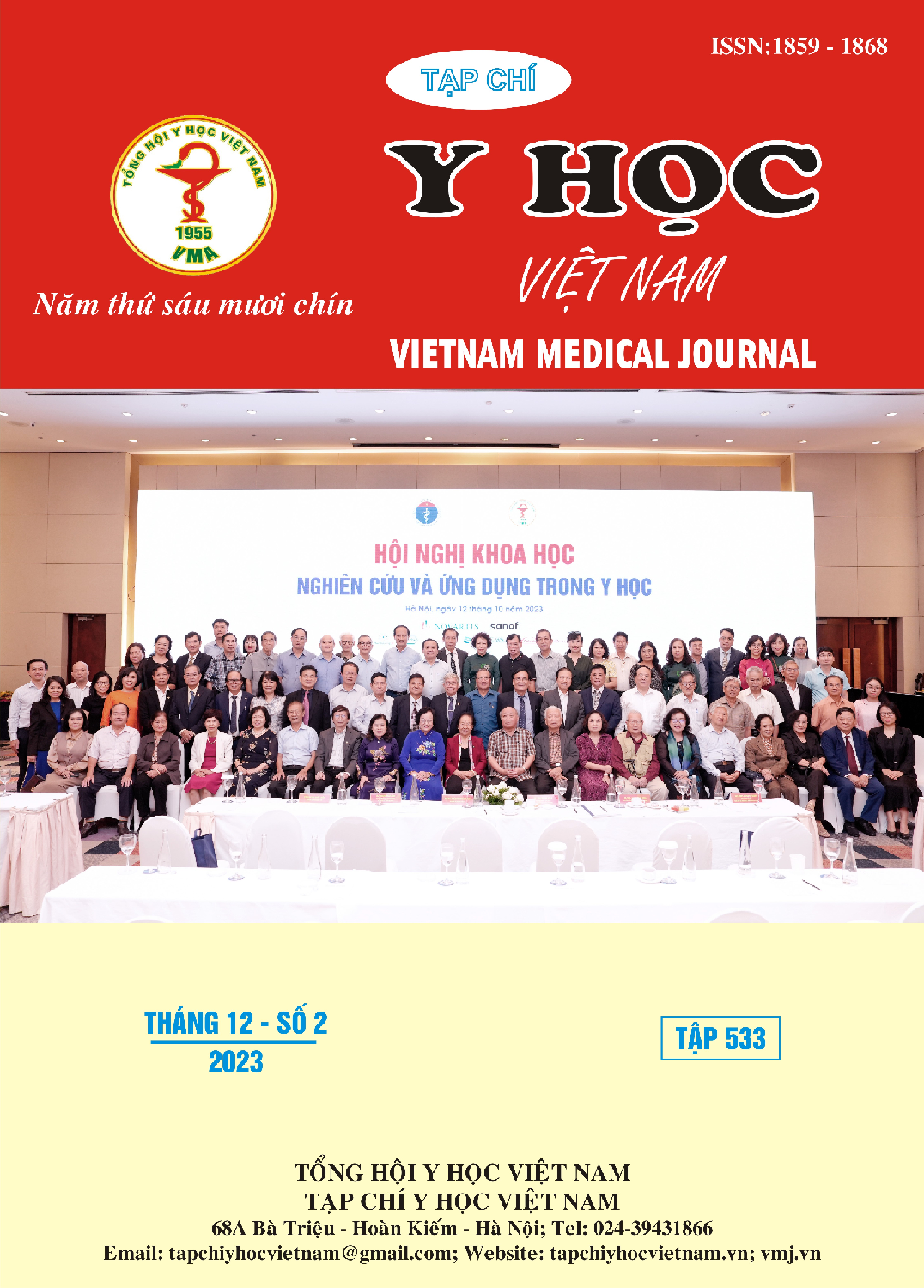CLINICAL AND SUBCLINICAL CHARACTERISTICS OF PREGNANT WOMEN WITH CESAREAN SECTION AT HOSPITAL 198
Main Article Content
Abstract
Objectives: Clinical and subclinical characteristics of pregnant women with cesarean section at hospital 198. Subjects and methods: All pregnant women with once previous cesarean section admitted at hospital 198 have had indication to trial of labor from 2018 to 2022. Results: The age distribution of the research subjects was mostly in the reproductive age range from 20 - 35 years old, accounting for 95.5% with an average age of 30.04 ± 3.1 years. Pregnant women who started monitoring for normal birth accounted for the highest rate in the gestational age group <35 weeks, accounting for 78.9%. Pregnant women admitted to the hospital with cervix dilated 2-3cm accounted for the highest rate of 45.1%, with 46.6% of uterine contractions reaching frequency 1-2. Distance between previous cesarean section and this pregnancy: The majority is > 36 months, accounting for 51.2%. Average: 46.12± 18.75 months, lowest is 12 months. Fetal weight of 3000-3700 grams accounts for the highest rate of 59.4%. The average BMI of the study subjects was 24.82 ± 2.7, the highest being 32.46. Conclusion: Pregnant women with once previous cesarean section can follow up vaginal delivery if eligible. The first-time surgeon is the best consultant for choosing a method of giving birth for the pregnant woman for the next time.
Article Details
References
2. Trần Văn Quang (2020). Nghiên cứu về thực trạng phẫu thuật lấy thai tại Bệnh viện Sản Nhi Yên Bái, Luận văn chuyên khoa cấp 2, Trường Đại học Y Hà Nội.
3. W. Zhan, J. Zhu, X. Hua và cộng sự (2021). Epidemiology of uterine rupture among pregnant women in China and development of a risk prediction model: analysis of data from a multicentre, cross-sectional study. BMJ Open, 11 (11), e054540.
4. E. S. Miller, A. Sakowicz, E. A. Donelan và cộng sự (2015). Does midtrimester cervical length aid in predicting vaginal birth after cesarean? American Journal of Obstetrics & Gynecology, 212 (6), 791.e791-791.e794.
5. I. A. Abdelazim, A. A. Elbiaa, M. Al-Kadi và cộng sự (2014). Maternal and obstetrical factors associated with a successful trial of vaginal birth after cesarean section. J Turk Ger Gynecol Assoc, 15 (4), 245-249.
6. Đỗ Quang Mai (2007). Nghiên cứu tình hình mổ lấy thai ở sản phụ con so tại bệnh viện phụ sản trung ương trong 2 năm 1996 và 2006, Luận văn thạc sỹ Y học, Trường đại học Y Hà Nội.
7. J. Rao, D. Fan, H. Ma và cộng sự (2022). Is there an optimal inter-delivery interval in women who underwent trial of labor after cesarean delivery (TOLAC)? Reproductive Health, 19 (1), 14.
8. G. Levin, A. Tsur, L. Tenenbaum và cộng sự (2022). Prediction of vaginal birth after cesarean for labor dystocia by sonographic estimated fetal weight. International Journal of Gynecology & Obstetrics, 158 (1), 50-56.


